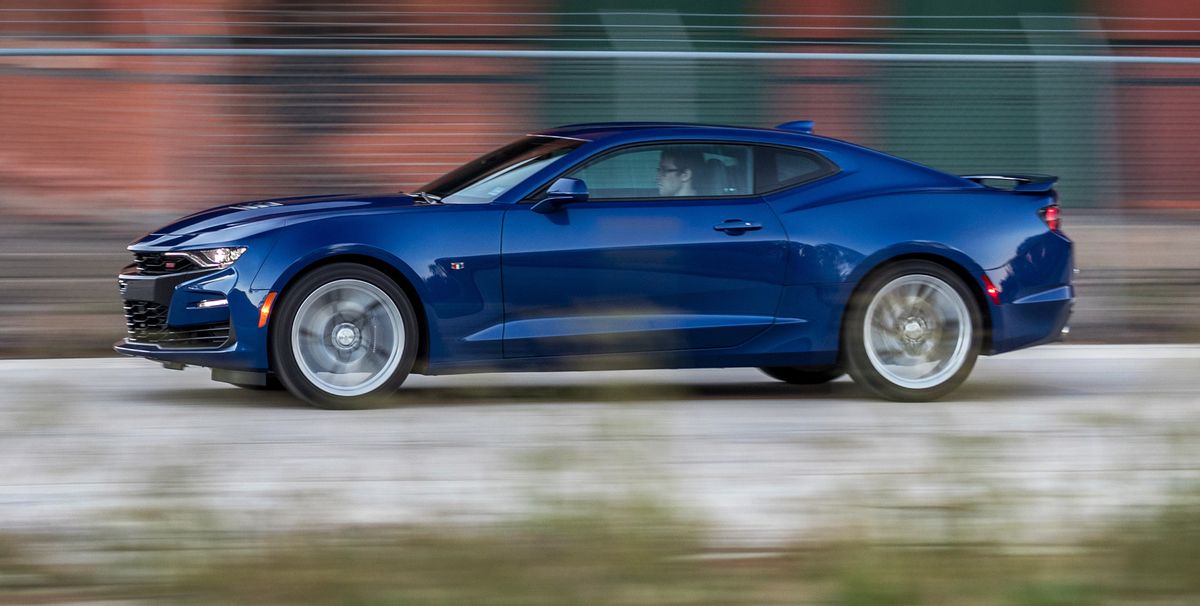
The genesis for what has evolved into the 2019 Chevrolet Camaro arrived in 1967 as a result of two decades’ worth of brisk postwar automotive development. Like Ford’s Mustang was related to the Blue Oval’s earlier “compact” Falcon, the Camaro’s F-body platform was originally a fork of the Chevy II’s tree. As Dearborn had done with the Mustang in ’64, General Motors wrapped pedestrian underpinnings in a sexier package. Yet, unlike Ford, which tapped Carroll Shelby to bring potency to its new car after its introduction, GM dropped some optional firecrackers under the hood of the Camaro right from the start, the most prominent of which were a range of beefy, small-block V-8 engines. While GM’s most storied powerplant continues to find a home in the latest Camaro SS, the pairing’s most significant update for 2019 is that the SS’s LT1 6.2-liter V-8 can now be mated to an optional 10-speed automatic transmission.
V-8 Staying Power
In 1955, when Chevrolet introduced its first small-block eight-cylinder engine in the first of the classic “shoe-box” Chevy sedans, the masses found a true successor to Ford’s hoary, prewar flathead V-8: an affordable, tweakable powerplant. The small-block turned out to be so versatile that it has since powered everything from stripped-down hot rods to limited-production European exotica. And unlike Fiat Chrysler’s modern not-quite-a-Hemi V-8 and Ford’s current DOHC 5.0-liter V-8—both of which use branding to echo entirely unrelated engines—the 455-hp LT1 in the Camaro SS can trace its pushrod lineage straight back to its initial 4.3-liter configuration.
2019 Chevrolet Camaro 2SS 10ATVIEW PHOTOS
CHRIS DOANE AUTOMOTIVE|CAR AND DRIVER
That’s not to say that other things haven’t changed. The Camaros of the 1960s, with their deep-set gauges, had a real vibe to their cabins, and the modern, sixth-generation car carries that tradition on to perhaps a deleterious extreme. If you’re the sort of driver who cares little about seeing what’s behind you, Chevy’s contemporary pony car is your steed. Mash the throttle and pray that those within spitting distance of your blind spots assume you’re as aggro as the Camaro’s angry mien suggests you are. Cabin materials also feel a step behind the most recent Dodge Challenger’s and at least two behind the latest Ford Mustang’s. The Camaro’s trunk opening struggles to swallow a large duffel bag. And its revised-for-2019 nose, particularly on the SS model, is quizzically reminiscent of the new Chevrolet Silverado full-size pickup’s, perhaps crossed with the face of the titular alien creature from the Predator films.
Shifting Gears
The Camaro’s 10-speed gearbox, however, quickly makes you forget the lazy days of the Turbo 350 three-speed slushbox that was often tasked with routing torque to the rear tires of Camaros of yore. Co-developed with Ford, the Camaro SS’s $1595 optional transmission is a paradigm of torque-transmitting splendor. It takes the LT1’s 455 lb-ft of twist and transmutes it into a solid 3.9-second zero-to-60-mph run and a 12.2-second quarter-mile pass at 118 mph—quicker than examples featuring the standard six-speed manual yet about the same as what the SS could manage with its previous eight-speed automatic. Although a contemporary Mustang GT fitted with essentially the same transmission is a tenth of a second quicker in both measurements, GM’s tuning of the 10-speed lends it a smoother, more cohesive action in casual driving around town. And on our 75-mph highway test loop, the SS posted an impressive 30 mpg, 3 mpg better than its EPA highway estimate and 6 mpg better than the equivalent Mustang GT along the same route.
